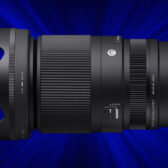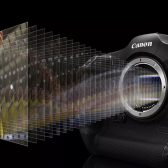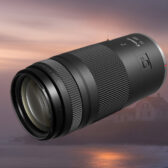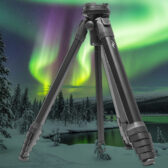Video Aliasing Issues
The EOS 5D Mark II, 7D and 1D Mark IV (no word on the T1i) appear to be affected by the issue.
What’s the deal?
“The article by Barry Green is about the oft-reported “aliasing” artifacts in video from the Canon HDSLRs (5D Mark II, 7D, 1D Mark IV). Barry does a great job of backing up a few steps and defining the term aliasing.
Aliasing occurs when you sample something infrequently enough that you create an impression of something that wasn’t there. Imagine a blinking light in a room with a door. You must open the door to check the status of the light. If you open the door often enough, you get a pretty good picture of the status of the light, maybe something like on, on on, off off off, on on on, etc. Your samples are frequent enough to accurately represent the light’s activity.”
Read all about it at Planet5D
cr
“The article by Barry Green is about the oft-reported “aliasing” artifacts in video from the Canon HDSLRs (5D Mark II, 7D, 1D Mark IV). Barry does a great job of backing up a few steps and defining the term aliasing.
Aliasing occurs when you sample something infrequently enough that you create an impression of something that wasn’t there. Imagine a blinking light in a room with a door. You must open the door to check the status of the light. If you open the door often enough, you get a pretty good picture of the status of the light, maybe something like on, on on, off off off, on on on, etc. Your samples are frequent enough to accurately represent the light’s activity.”
|
When you purchase through links on our site, we may earn an affiliate commission. Here's how it works. |








I need coffee before I even start thinking about WTF this is talking about, lol
I’m glad I’m not the only one. I’m only half way through my first Mt Dew and that pretty much blew my mind.
Look up Nyquist sampling… It makes for good reading if you’re having trouble getting to sleep.
Haha. I’ve got a t1i, the lowest quality DSLR with video. And I’ve got no anti-aliasing. Serves you right for having a better camera than me. Suckers!
OK, this is no big deal, it’s just a possible limitation of the cameras under certain conditions, not some big design flaw everyone has to start bashing the cameras over.
The article even starts out with:
“We’ve seen some discussions about it in the past and we haven’t experienced it ourselves.”
“Let’s be cautious about blowing this all out of proportion tho – there are thousands upon thousands of movies being made with these hybrid DSLRs with no problems… and if you’re aware of some of the limitations of the camera as you use it, then you’ll be a lot better off. I see some of the comments posted in Stu’s blog indicating that the sky is falling and video on these cameras is trash, but we all know that isn’t true… so let’s take this information and be better filmmakers with our cameras ok?”
Everything has limits. They still make awesome video though.
@pure, you might want to read the article. Stu over at prolost does a good recap. The aliasing is simply a fact of digital sensors. Digital being photosites separated by some amount of distance.
http://prolost.com/blog/2009/12/3/you-didnt-believe-me.html
“So what does this have to do with Canon HDSLRs? The same thing it has to do with every digital camera. Every camera that uses photosites to create pixels has to deal with this venetian blind problem. There’s space between those photosites, and in that space you can miss out on important information about what was happening in front of the lens.”
So the T1i has the problem as do all video cameras. But their strengths are delivering impressive results with inter-changeable lenses at a (relatively) low pricepoint.
This does impact video that is projected at very large sizes, like on a motion picture screen. of course, people who produce motion pictures have processes to remove it.
Still, I would expect future generations of cameras to improve.
It’s there in the T1i also
Ha. I don’t get it either.
It might effect it, under certain conditions that most people are not experiencing with the cameras…have to learn the limitations of any camera.
Don’t you DARE tell me what I can do with my own camera…
Oh, hi t1i. Didn’t see you there. I guess I got aliasing.
i had fixed the problem almost definitively testing with boris continuum complete vers 6
by the DV FIXER PLUG INS its like magic
you have to adjust iy by your scenario case individually,but with unsharp mask applyed
after alias is no more a big trouble in certain condition i mean.
on toolfarm i had seen they sell now on cheap unit.
bellantonio 666 Reply:
December 4th, 2009 at 4:31 pm
i had fixed the problem almost definitively testing with boris continuum complete vers 6
by the DV FIXER PLUG INS its like magic
you have to adjust iy by your scenario case individually,but with unsharp mask applyed
after alias is no more a big trouble in certain condition i mean.
on toolfarm i had seen they sell now on cheap unit.
The aliasing on the video of Canon stills cameras can be very bad because Canon uses line skipping to get the 1920 x 1080 resolution from the sensor.
If the camera had a lot more on-board processing it could use the entire resolution of the sensor and then down sample (and sharpen) the output before recording it.
Some cameras have much less aliasing than these, but they cost a lot more (ten times or even hundreds of times more).
I’d call it a limitation of the technology brought about by the price point of the camera.
Either live with it or shell out an awful lot more for a better camera.